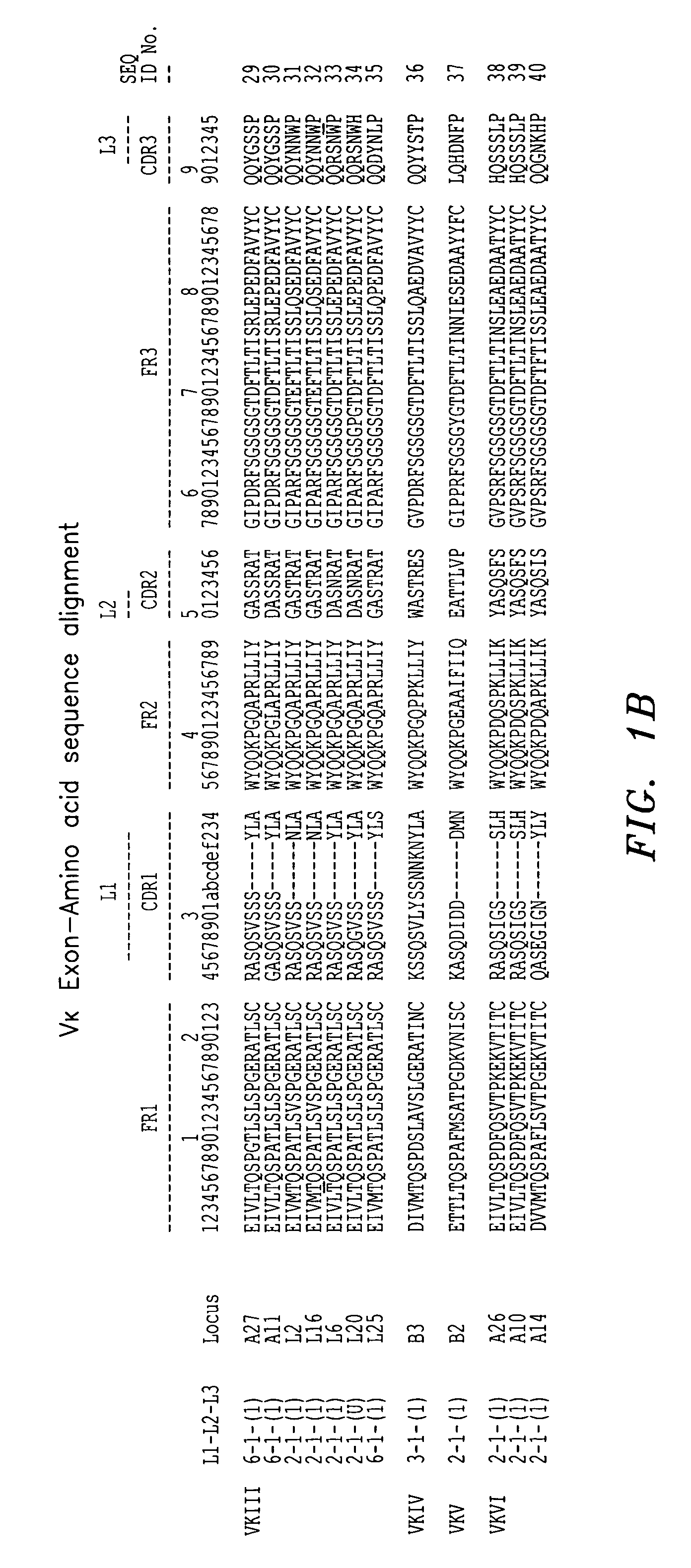Hybrid antibodies
a hybrid antibody and antibody technology, applied in the field of hybrid antibodies, can solve the problems of human immunogenicity, loss of antigen affinity, rodent variable region still posing the risk of inducing an immune response, etc., and achieve the effect of high homology and high homology
- Summary
- Abstract
- Description
- Claims
- Application Information
AI Technical Summary
Benefits of technology
Problems solved by technology
Method used
Image
Examples
example 1
[0093]A murine monoclonal antibody directed to human mannose binding lectin (the “initial antibody”) was utilized in connection with the techniques described herein. The VH and VL regions were cloned and sequenced, and the individual framework regions designated FR1, FR2, FR3, and FR4 were distinguished from the CDRs using a combined Kabat / Chothia numbering system. See FIG. 4A for the variable light chain sequence of the monoclonal antibody. A BLAST search of the NCBI protein databank was conducted using each individual variable light chain framework region as a query starting with FR1. Antibody sequence gene identification number 3747016 was selected as having an FR1 with good homology to FR1 of the initial antibody light chain. See FIG. 4B. 3747016 belongs to human germline family Vκ III (see FIG. 1), either member L2 or L16, and its FR1 has 78% homology to FR1 of the initial antibody. Antibody sequence gene identification number 5833827 was selected as having an FR2 with good hom...
example 2
[0102]A murine monoclonal antibody directed to h-DC-SIGN (the “initial antibody”) was utilized in connection with the techniques described herein. The VH and VL regions were cloned and sequenced, and the individual framework regions designated FR1, FR2, FR3, and FR4 were distinguished from the CDRs using a combined Kabat / Chothia numbering system. See FIG. 9A for the variable light chain sequence of the monoclonal antibody. A BLAST search of the NCBI protein databank was conducted using each individual variable light chain framework region as a query starting with FR1.
[0103]FR1
[0104]Antibody sequence gene identification number 441333 was selected as having an FR1 with good homology to FR1 of the initial antibody light chain. See FIG. 9B. 441333 belongs to human germline family Vκ II (see FIG. 1), member A17 and its FR1 has 82% homology to FR1 of the initial antibody. Antibody sequence gene identification number 5578780 was selected as a second antibody having an FR1 with good homolog...
PUM
| Property | Measurement | Unit |
|---|---|---|
| Fraction | aaaaa | aaaaa |
Abstract
Description
Claims
Application Information
 Login to View More
Login to View More - R&D
- Intellectual Property
- Life Sciences
- Materials
- Tech Scout
- Unparalleled Data Quality
- Higher Quality Content
- 60% Fewer Hallucinations
Browse by: Latest US Patents, China's latest patents, Technical Efficacy Thesaurus, Application Domain, Technology Topic, Popular Technical Reports.
© 2025 PatSnap. All rights reserved.Legal|Privacy policy|Modern Slavery Act Transparency Statement|Sitemap|About US| Contact US: help@patsnap.com



